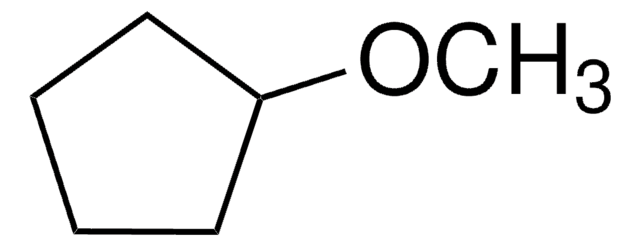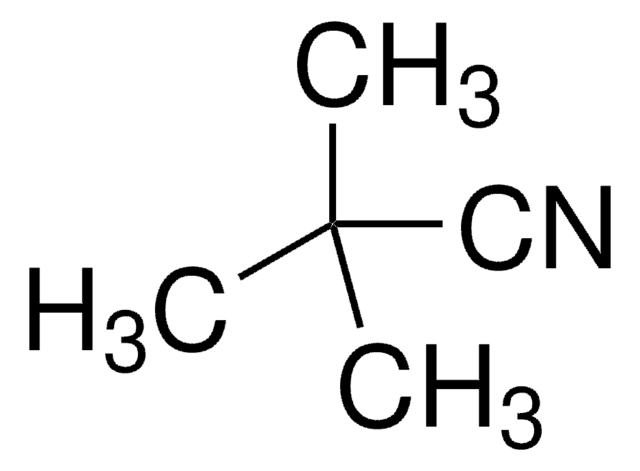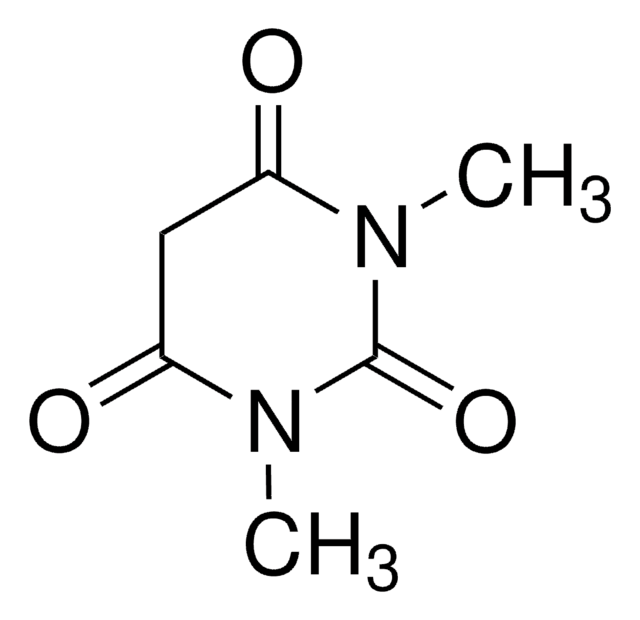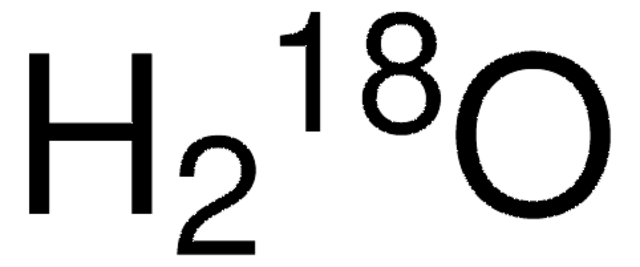8.07068
Propionitrile
for synthesis
Synonym(e):
Propionitrile, Ethyl cyanide
About This Item
Empfohlene Produkte
Dampfdruck
50 hPa ( 20 °C)
Qualitätsniveau
Assay
≥99.0% (GC)
Form
liquid
Selbstzündungstemp.
515 °C
Wirksamkeit
39 mg/kg LD50, oral (Rat)
40-56 mg/kg LD50, skin (Rabbit)
Expl.-Gr.
3.1-14 % (v/v)
pH-Wert
10 (20 °C, 50 g/L in H2O)
bp
97 °C/1013 hPa
mp (Schmelzpunkt)
-92 °C
Übergangstemp.
flash point 12 °C
Dichte
0.782 g/cm3 at 20 °C
Lagertemp.
2-30°C
InChI
1S/C3H5N/c1-2-3-4/h2H2,1H3
InChIKey
FVSKHRXBFJPNKK-UHFFFAOYSA-N
Anwendung
- Fructose-Based Surfactant Synthesis: Propionitrile is utilized in the synthesis of fructose-based surfactants, offering environmentally friendly solutions in the detergent industry and showcasing its potential in green chemistry applications (Lin et al., 2024).
- Water Filtration System Application: The application of propionitrile derivatives in water filtration systems, specifically for manganese removal, demonstrates its role in enhancing water purification technologies, contributing significantly to environmental management (Basirun et al., 2023).
- Supercapacitor Development: Propionitrile is a key component in the development of safe and high-performance supercapacitors, using nonflammable electrolytes to improve energy storage systems, which is crucial for advancing renewable energy technologies (Van T Nguyen et al., 2023).
- Electro-photochemical Reactivity in Organic Synthesis: Propionitrile is involved in catalyst-free electro-photochemical processes, facilitating the synthesis of complex organic compounds like oxazoles and pyrroles, which are essential for pharmaceutical and materials science research (Maiti et al., 2023).
Hinweis zur Analyse
Dichte (d 20 °C/ 4 °C): 0.781 - 0.783
Identität (IR): entspricht
Signalwort
Danger
Gefahreneinstufungen
Acute Tox. 2 Dermal - Acute Tox. 2 Oral - Acute Tox. 4 Inhalation - Eye Irrit. 2 - Flam. Liq. 2
Lagerklassenschlüssel
3 - Flammable liquids
WGK
WGK 1
Flammpunkt (°F)
42.8 °F - closed cup
Flammpunkt (°C)
6 °C - closed cup
Analysenzertifikate (COA)
Suchen Sie nach Analysenzertifikate (COA), indem Sie die Lot-/Chargennummer des Produkts eingeben. Lot- und Chargennummern sind auf dem Produktetikett hinter den Wörtern ‘Lot’ oder ‘Batch’ (Lot oder Charge) zu finden.
Besitzen Sie dieses Produkt bereits?
In der Dokumentenbibliothek finden Sie die Dokumentation zu den Produkten, die Sie kürzlich erworben haben.
Unser Team von Wissenschaftlern verfügt über Erfahrung in allen Forschungsbereichen einschließlich Life Science, Materialwissenschaften, chemischer Synthese, Chromatographie, Analytik und vielen mehr..
Setzen Sie sich mit dem technischen Dienst in Verbindung.








